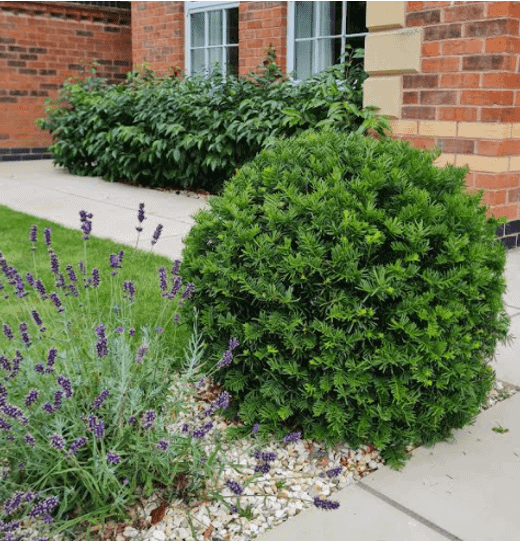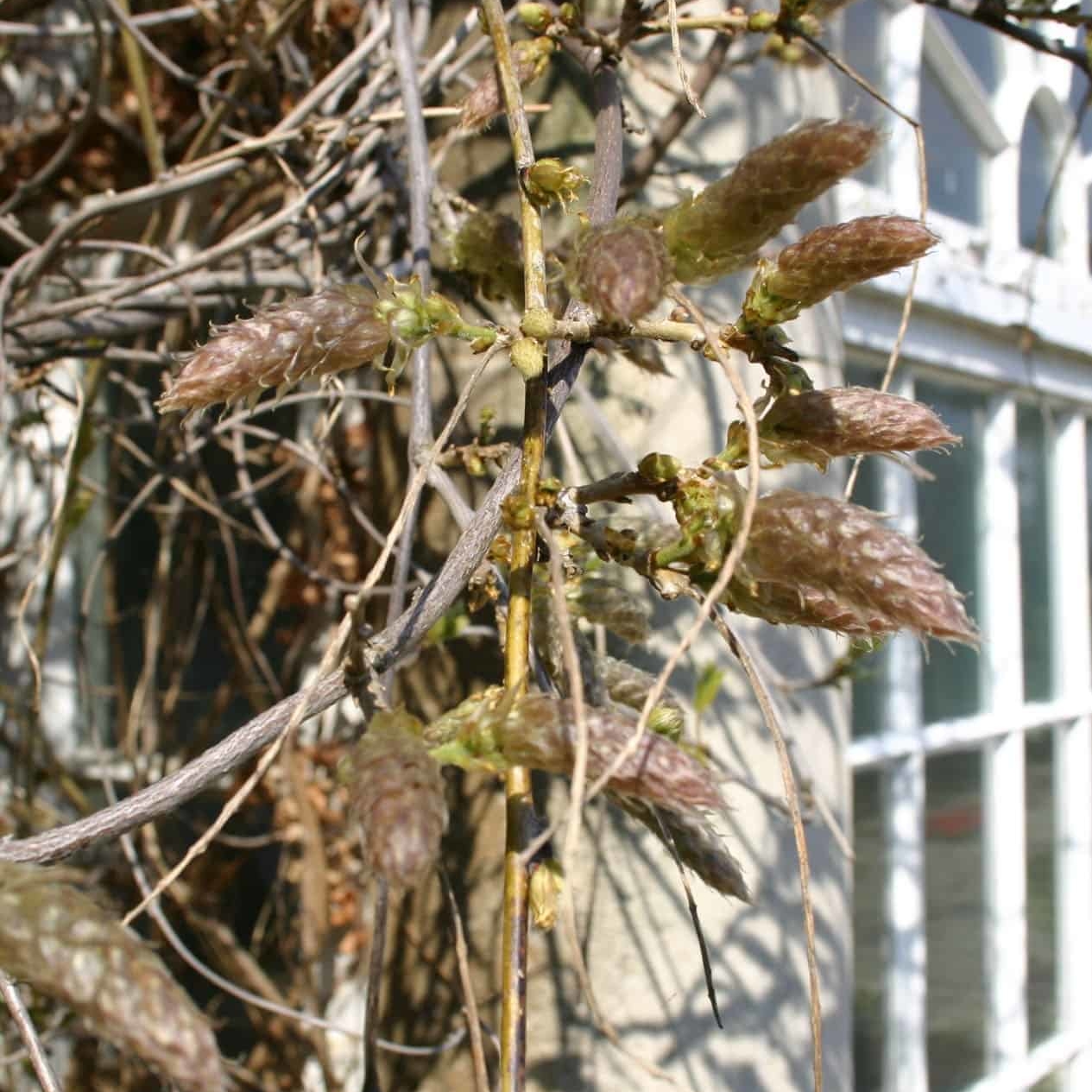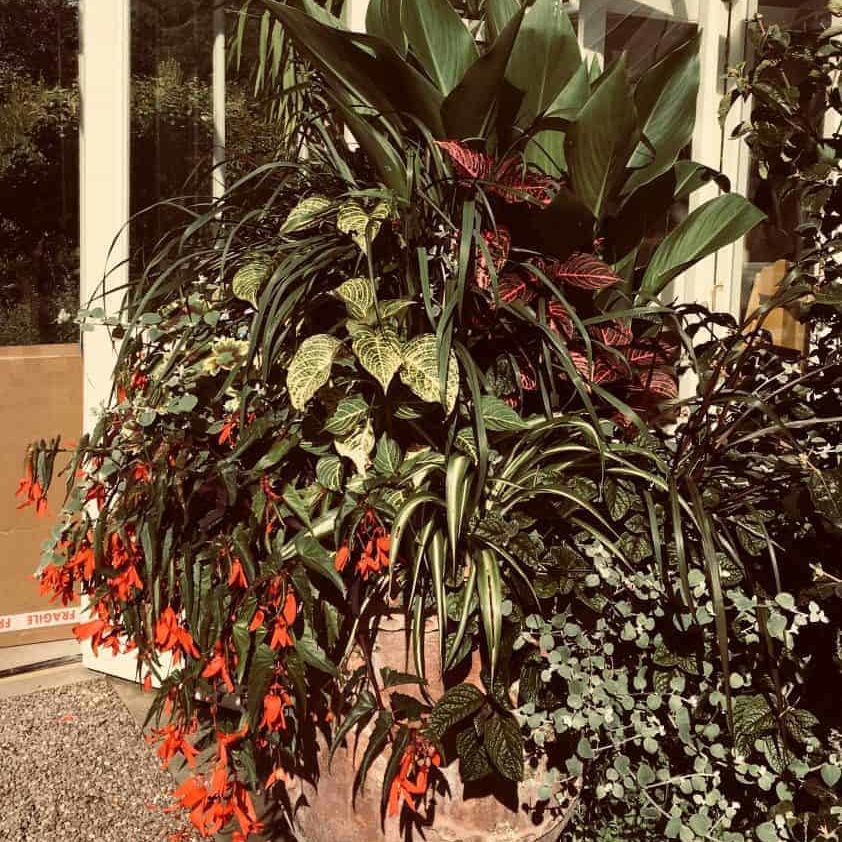What is the best plant for hedging and topiary?
A Potted History
Ancient. Spiritual. Toxic. The King of hedging. English Yew, or Taxus baccata, is one of Europe’s longest-lived native trees, alongside Juniper and Scots Pine in Britain. Yew trees, common across the UK, are seen in woodlands, country estates, gardens, and churchyards, where some specimens predate the churches themselves. Yews can live up to 900 years before reaching their ancient stage, outliving oak trees by centuries. The Fortingall Yew in Scotland, estimated to be 3,000–9,000 years old, is among Europe’s oldest living organisms.
A Yew’s age is hard to determine, as its heartwood often rots, leaving hollow trunks, and their regenerative ability produces new growth from deadwood. This resilience adds to their mystical reputation and makes them ideal for intricate topiary and formal hedges, discussed further below.
Yew trees have long been entwined with folklore and religion, symbolizing immortality due to their ability to regenerate. They were believed to purify graves and are linked to myths of sprouting from holy men’s staffs or building beams. Yew timber, known for its strength and durability, has been used for centuries. One of the world’s oldest wooden artefacts, a 450,000-year-old spearhead found in Essex, is made from Yew. Its hard yet flexible wood was famously used for Medieval longbows, with entire plantations dedicated to their production. Today, Yew timber remains sought after for bow-making, cabinetry, veneers, and wood turning.
Identification
To identify Taxus baccata, look for a dark green evergreen plant with small, straight, needle-like leaves arranged in two rows along the stem. The bark is reddish-brown with purple tones and peels as it matures. Yew trees are dioecious, meaning male and female flowers grow on separate trees. Male flowers are small, globe-shaped, and yellow-white, while female flowers are green, scaly buds that turn brown and acorn-like as they age. In spring, the male flowers release clouds of pollen, often seen billowing through the canopy.
Although classified as a conifer, Yew does not produce seeds in cones. Instead, its seeds are enclosed in fleshy, red berry-like structures called arils, which are open at the tip. The aril’s flesh is the only non-toxic part of the tree and serves as a food source for birds, mammals, and deer, which help disperse the seeds through their droppings. However, the seed inside is highly toxic to humans and animals when digested.
The word “Taxus” may remind us of “toxic,” referencing the poisonous taxane alkaloids in the needles and bark. These substances, though deadly, play a crucial role in modern medicine. For example, taxane derivatives are used in chemotherapy drugs like Taxotere® (docetaxel) to treat lung, prostate, and advanced breast cancers, highlighting the balance between danger and utility inherent in the Yew tree.
Garden Uses

There are so many reasons to use Yew in your garden and at Bestall & Co it is one of our favourite plants to include. Its dense yet fine evergreen foliage provides the perfect backdrop for other plants, making colours pop. Its calming green presence remains all year adding valuable interest in bleak winter months as well as adding important structure to define different areas in garden and create focal points.
Taxus baccata has been widely used in garden design and horticulture for centuries. Yew is reliable, tolerant, and long-lived, often the main survivor from earlier phases of historic gardens and can be widely admired in many forms in public gardens throughout the country. Renishaw Hall Gardens has a bountiful number of immaculately pruned Taxus hedges which create romantic, Italianate style garden rooms. Powis Castle’s famous Yew ‘tumps’ are almost 300 years old, and their unusual organic shape tells a story of the changing tastes in horticulture though history.
Yew is available in a range of sizes and forms, including balls, pyramids, mushrooms, and spirals, which create an instant visual impact. It can serve as hedging, from 1m to 4m tall, or as screening. Larger sizes, over 80cm, often come as rootballs and are more expensive due to the care required to grow them. For budget-conscious gardeners, smaller bare-root specimens are a cost-effective option, though they require time and careful pruning to reach their full potential.
Mature Yew trees can reach 20m in height and 10m in spread, making them excellent specimen trees. Their dense, bushy habit when clipped also makes them ideal for hedging, topiary, and creative shapes like cloud pruning. Yew’s regenerative ability allows overgrown specimens to be restored through hard pruning, which can save costs and benefit local wildlife. As a native species, Yew provides food, shelter, and nesting sites, adding ecological value to the garden.
Cultivars
It is no co-incidence that Taxus bacatta has held the RHS Award of Garden Merit for 20 years! There are currently over 200 named cultivars of Taxus baccata. ‘Cultivar’ refers to a plant variety that has been produced in cultivation by selective breeding from a natural species but but does not produce true-to-seed.
The most popular cultivar is the Irish Yew (Taxus baccata ‘Fastigiata’), known for its upright, columnar shape. Originating from two trees discovered in Ireland, this fastigiate variety can grow up to 6m tall and remain under 60cm in diameter. With age, Irish Yews may develop a broader, cigar-like shape, which can be managed through careful pruning. Older trees may require support for outward-bending branches or selective removal.
Irish Yews bring striking architectural structure to gardens, whether used as vertical accents, focal points in knot gardens, or in symmetrical arrangements against walls for contrast and height. Their compact, stately form makes them versatile and impactful in a variety of designs.
- baccata ‘Repandens’ is a lesser known but equally robust, spreading cultivar of English Yew. It greatly resembles the native dark green Yew in foliage appearance, but rarely produces berries and has a very different growth habit – lateral rather than vertical, making it perfect for ground cover. After 10 years of growth a mature specimen will measure 60cm tall and 2m wide. T. ’Repandens’ can also be used as low formal hedging when pruned regularly or shaped into organic forms.
Golden Taxus baccata cultivars, including Semperaurea and Fastigiata Aureomarginata, are known for their bright yellow foliage. While they may be seen as outdated due to their association with 1960s rockeries, these plants still have a place in modern garden design. A notable example is the new knot garden at Thornbridge Hall in Derbyshire, where golden yews are paired with Stipa grasses, purple Salvia, and Verbena. This creates a stunning, contemporary contrast of colour and texture.
Care

Taxus will tolerate a wide range of soils and situations, providing it is well drained – including shallow chalk soils, exposure, dry soils, urban pollution, full sun, and shade (in deep shade the foliage may be less dense). However the one condition it will not endure is water-logging, and in poorly-draining situations it is prone to succumb to the root-rotting pathogen Phytophthora.
Yew will appreciate an annual feed of organic fertiliser (Fish, Blood and Bone is good) as well as annual mulching with a soil improver to prevent weeds and add nutrients to the soil. Apply both in early spring for optimum growth. Feeding is always necessary for Yew in planters. A controlled release all round fertiliser is best for this job, such as ‘Osmacote plant food tablets’ which cover the entire growing season if inserted in February and last for 6 months.
Although Yew is labelled as a slow growing plant, when newly planted and unpruned, young specimens can put on 40cm of growth a year – more if it is well cared for and growing in ideal conditions. Yew will begin to grow slowly when the growing tips of the central, leading stems are cut.
With a new immature hedge that still has quite a lot of growing to do, refrain from cutting the top off if it has not reached the intended height, as this will reduce the speed of growth from around 40cm a year to 10cm a year. Once the hedge has reached the desired height, allow for 10cm more growth than the intended and lightly prune at any time except in freezing weather. In the early years, the more often you clip the side branches, the bushier your Yew hedge will become.
From August to October, it’s time to trim Yew hedges. For a neat look, leave the lower branches slightly longer than the top ones to create tapered sides, ensuring light reaches the base and preventing bare patches. Yews are very forgiving and can be hard-pruned if needed, bouncing back with strong growth. For significant shape changes, such as creating an archway or reducing height, do this in mid-winter when the plant is semi-dormant. When reducing width, prune one side heavily in winter, and the other the following year. For intricate topiary, trim in June and/or late August.
If you have clay soil, Yew can still work in your garden, provided the soil is reasonably well-drained. Yew doesn’t thrive in boggy, waterlogged areas but can tolerate occasional winter flooding. Avoid the usual trench method of planting, which can trap water. Instead, create a small slit or hole and backfill with the existing soil, firming the roots in well to promote drainage.
Taxus can be difficult to establish and one of the most commonly asked questions is why is my Taxus turning brown?
First published August 2021 & revised June 2024.
Emily Barnes
Emily joined the Bestall & Co team as a Garden Designer and Project Lead after attaining a degree in Horticulture at Nottingham Trent University. Achievements include coming in the top 3 at the Northwest and North Wales Regional Final of The Young Horticulturist of the Year 2019 and winning the People’s Choice Award for her garden ‘Elements of Sheffield’ at RHS Chatsworth Flower Show. Emily has a keen eye for design detail, a passion for all things plants, as well as a deep love for the great outdoors and wildlife.



